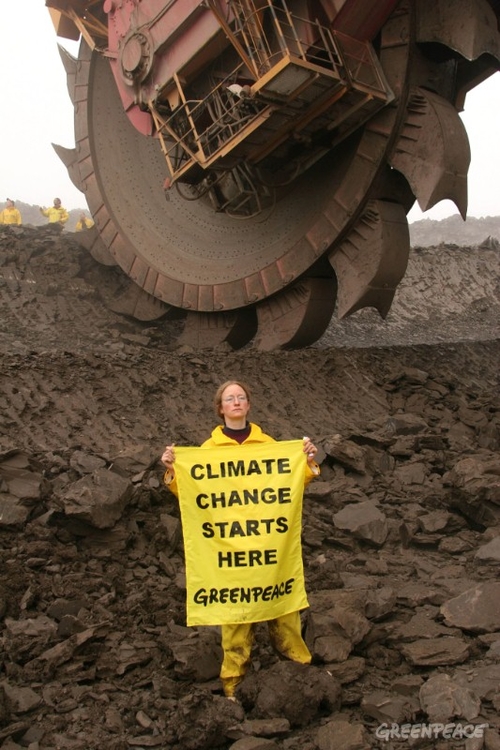Online and physical protests, banners, flags and the occasional complicating of international relations. Greenpeace, protecting the environment since 1971.
Greenpeace is a very large organisation protesting for the protection of the environment and nature. This is usually done through conventional means like organizing largescale protests. However, slightly more unconventional means are also a possibility. Think of boarding Russian oilrigs or occupying coal fired power plants. Greenpeace has no problem reaching the headlines with their actions.
But recently they have announced their largest ambition to date, placing themselves in the bidding war for Vattenfall’s lignite mining activities in Germany.
For those of you who do not know, Vattenfall is one of Europe’s largest energy companies, operating mainly in north-western Europe. Germany is Europe’s largest producer of lignite, or brown coal, a type of fossil fuel usually seen as the largest emitter of carbon dioxide per weight. Combine those two and you get one big polluter. Now, due to developments in the global economy and other factors, Vattenfall has decided to sell its lignite mining activities, together with some hydroelectric stations. For a company that has a turnover of 17+ billion euro’s, you can imagine that these mining sites will not come cheap. Although no number has been released yet, we should probably think about tens or maybe hundreds of millions of euros. That seems like a lot for a single NGO.
Maybe so, but Greenpeace would not be Greenpeace if they did not have out-of-the-box solutions for this dilemma. Besides regular donations, crowdfunding is mentioned as a possibility. And although it all sounds way out of reach for them, they may not even be that crazy. Greenpeace supporters are highly committed, compared to other NGO’s and charities, as evidenced by their largescale protests. If there would be any NGO who could possibly pull this off, it would be Greenpeace. Therefore I do not find it interesting to discuss the who, when and how.
What I do find worth discussing is the following: Should Greenpeace spend enormous amounts of cash buying mining activities? And if they should, what then are the economical and societal consequences?
It does not take a genius to anticipate what Greenpeace will do if and when they acquire these mines. Shut them down. The sole reason for Greenpeace to buy the coalfields in the first place is to make sure the lignite is to remain untouched. This is obviously good for the environment since this will enforce a rise in consumption of other less harmful or sustainable sources of energy. However, one of the potential issues here is that shutting down giant mining activities will turn many thousands of people to the employment agencies. Furthermore, depriving the energy market of a large chunk of the coal supply could potentially shut down power plants resulting in power outages, especially during peak moments.
Whether the ecological benefits weigh out against the economical and societal issues is up for debate. Personally, I would love to see Greenpeace acquire these fields and mines. Not solely for the good of the environment, but also to see the giant, dominating corporate world getting bullied by an environmental NGO.
